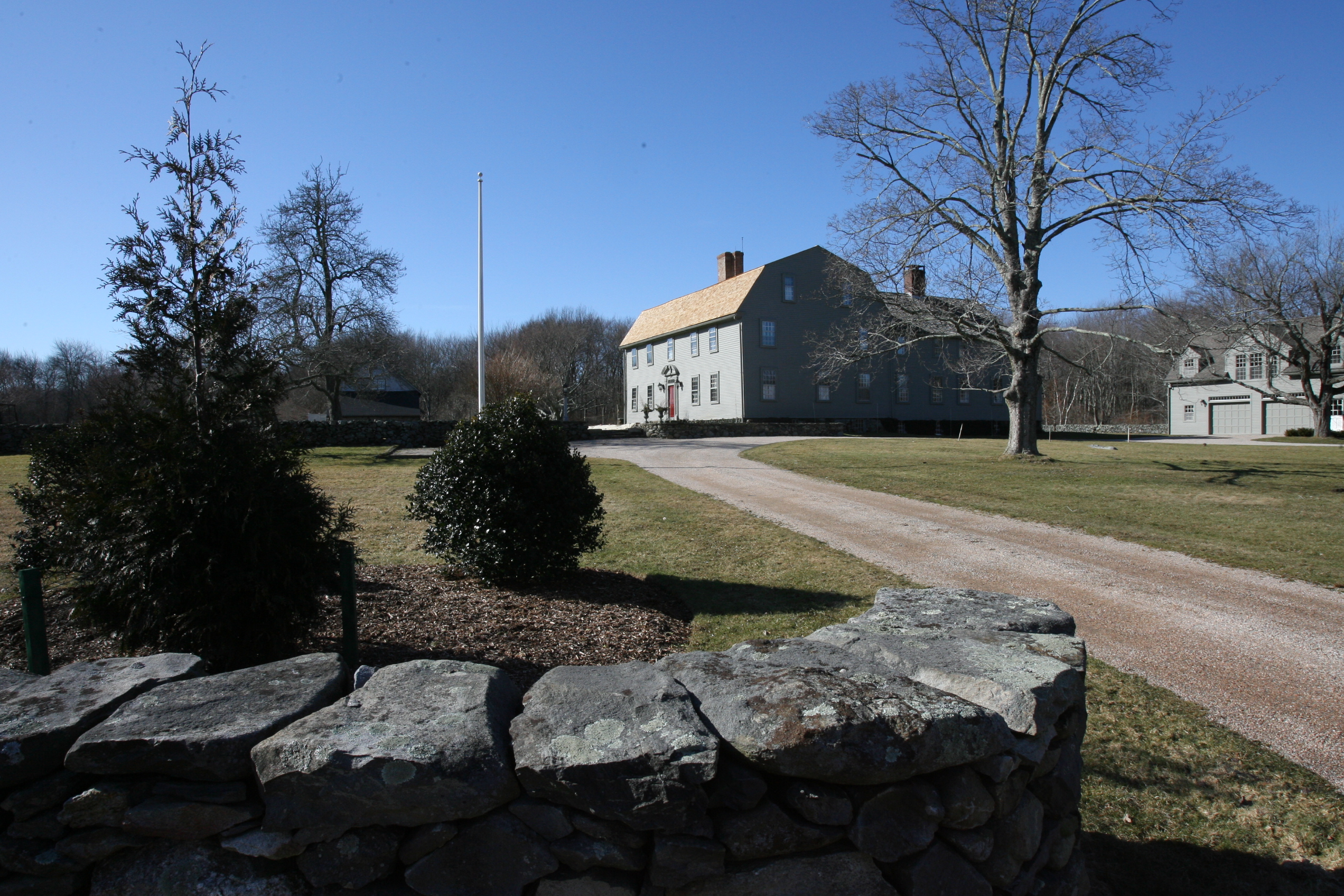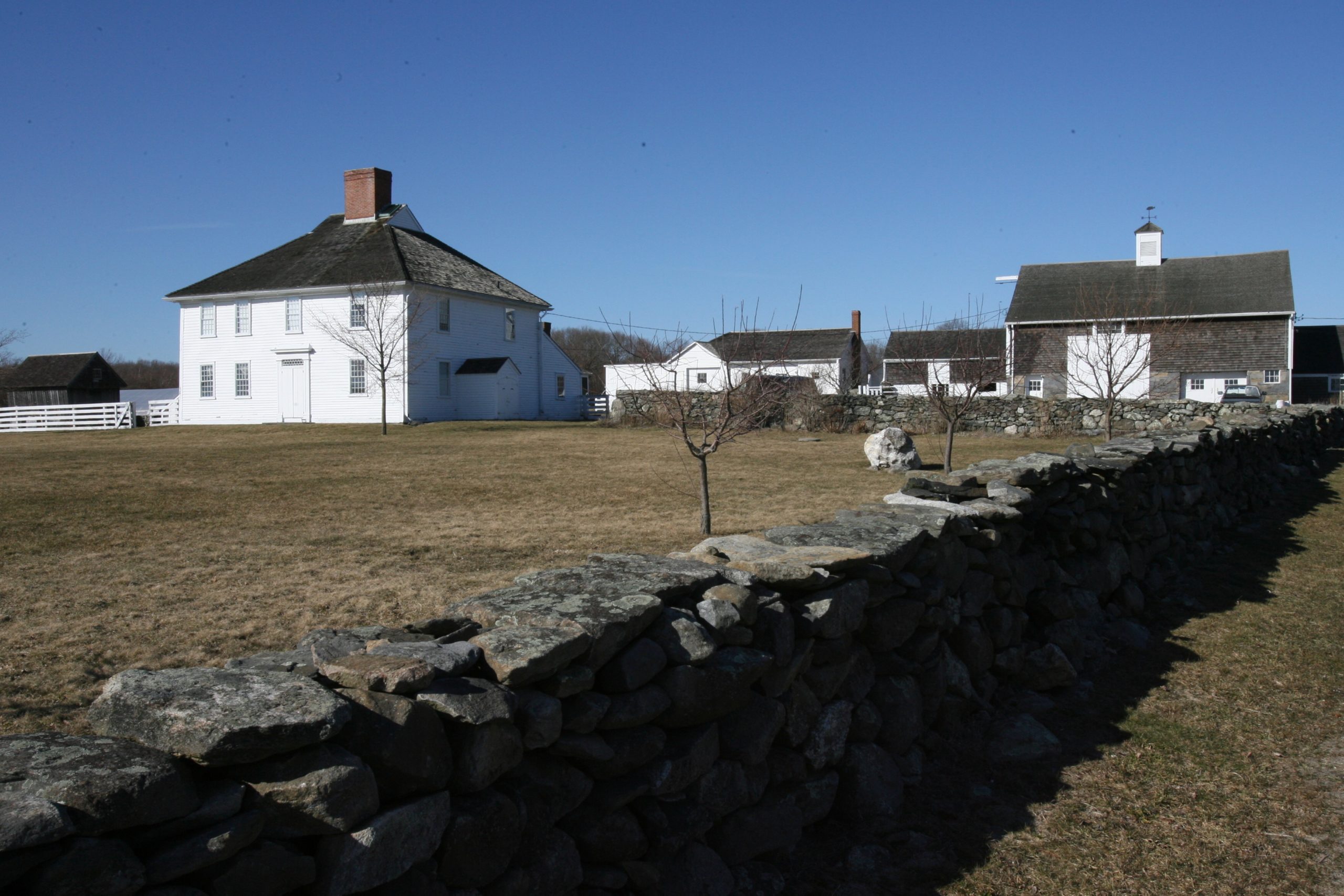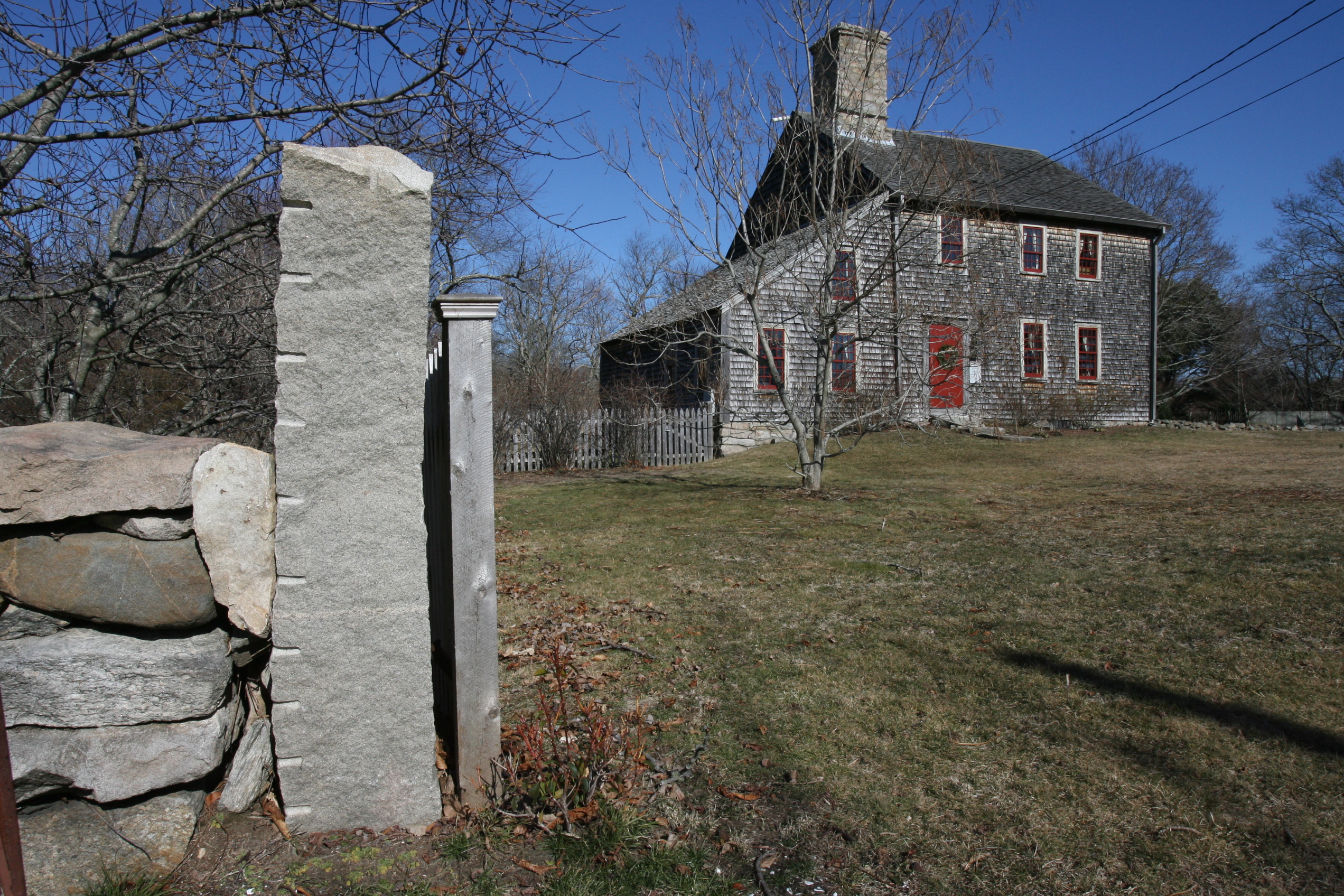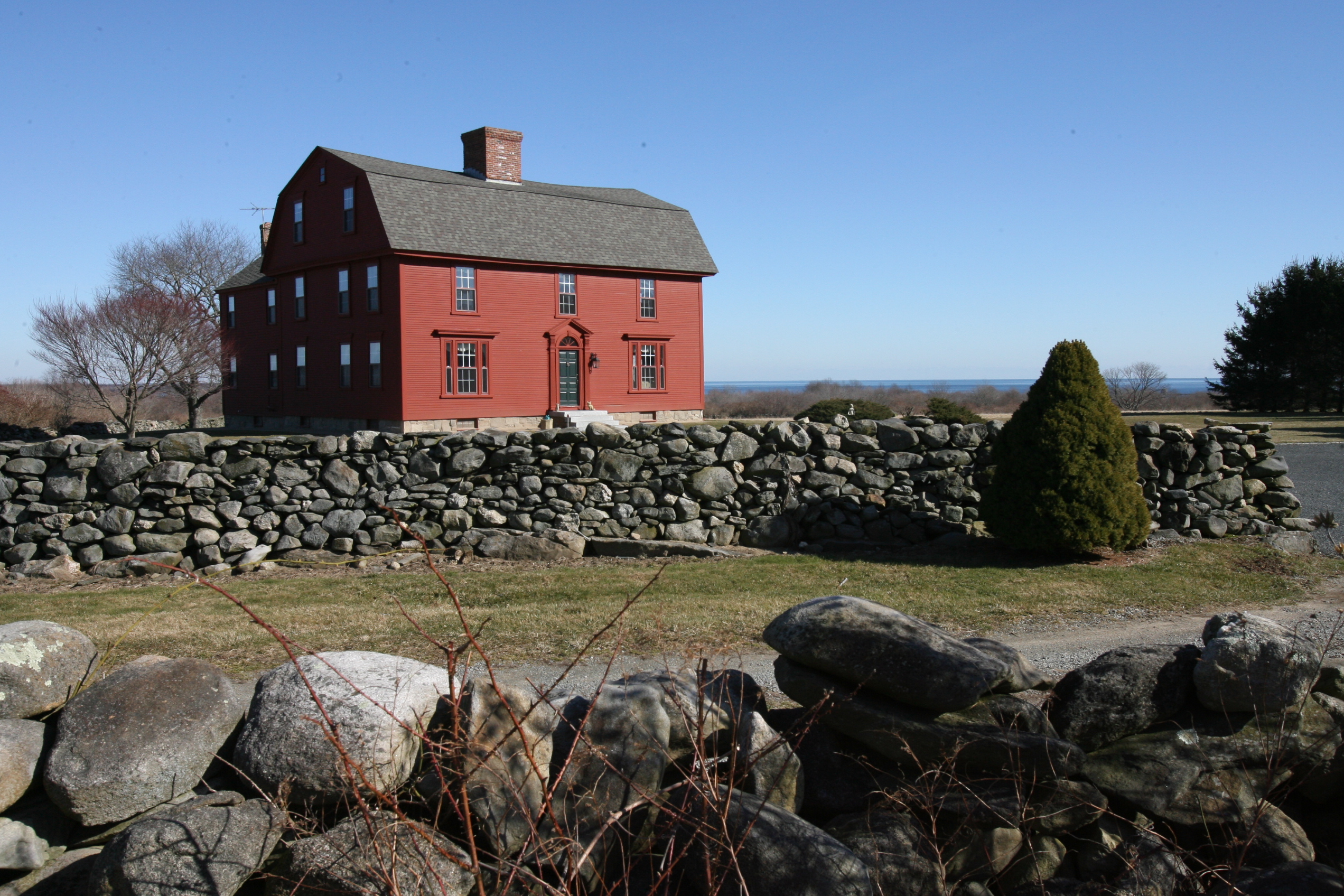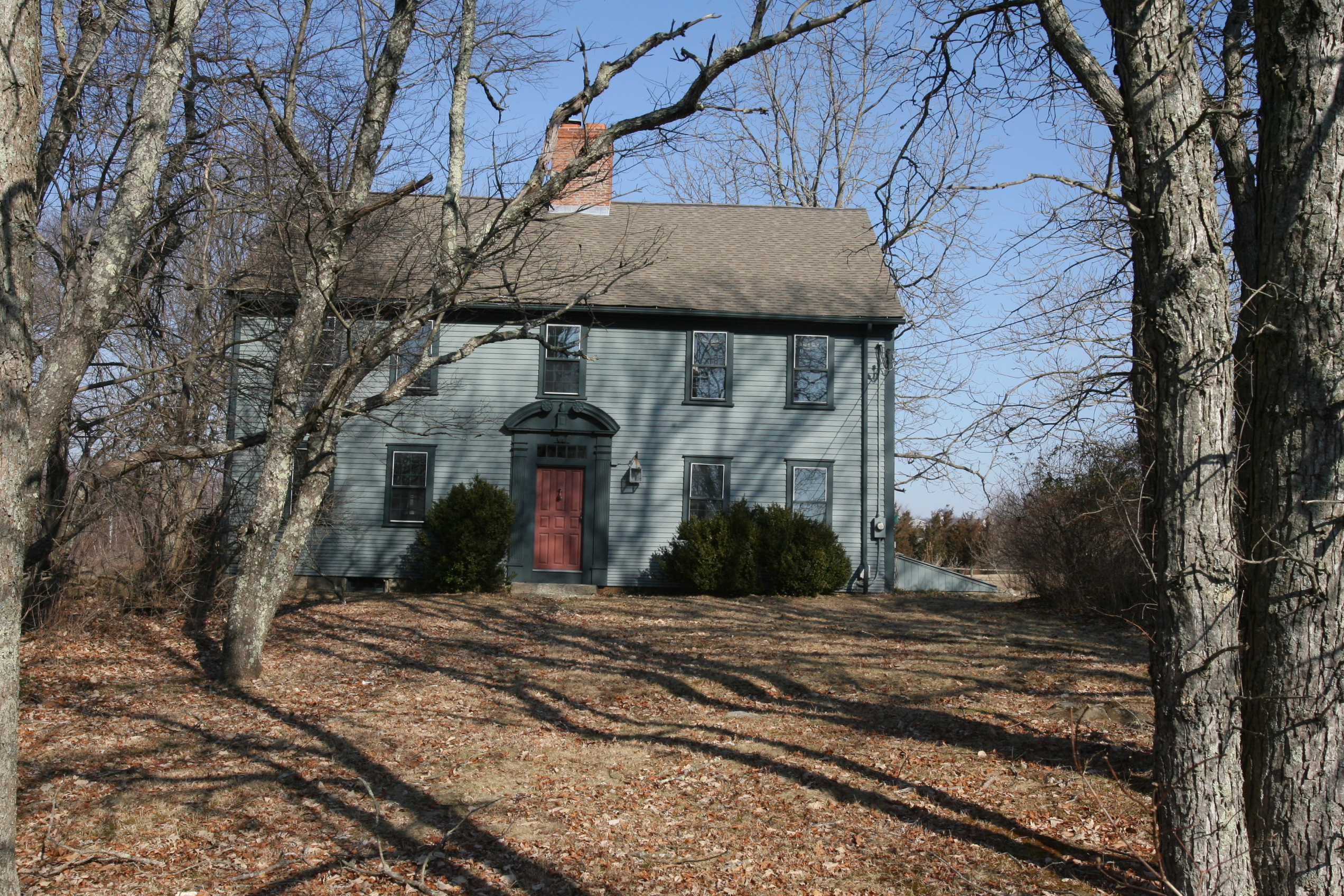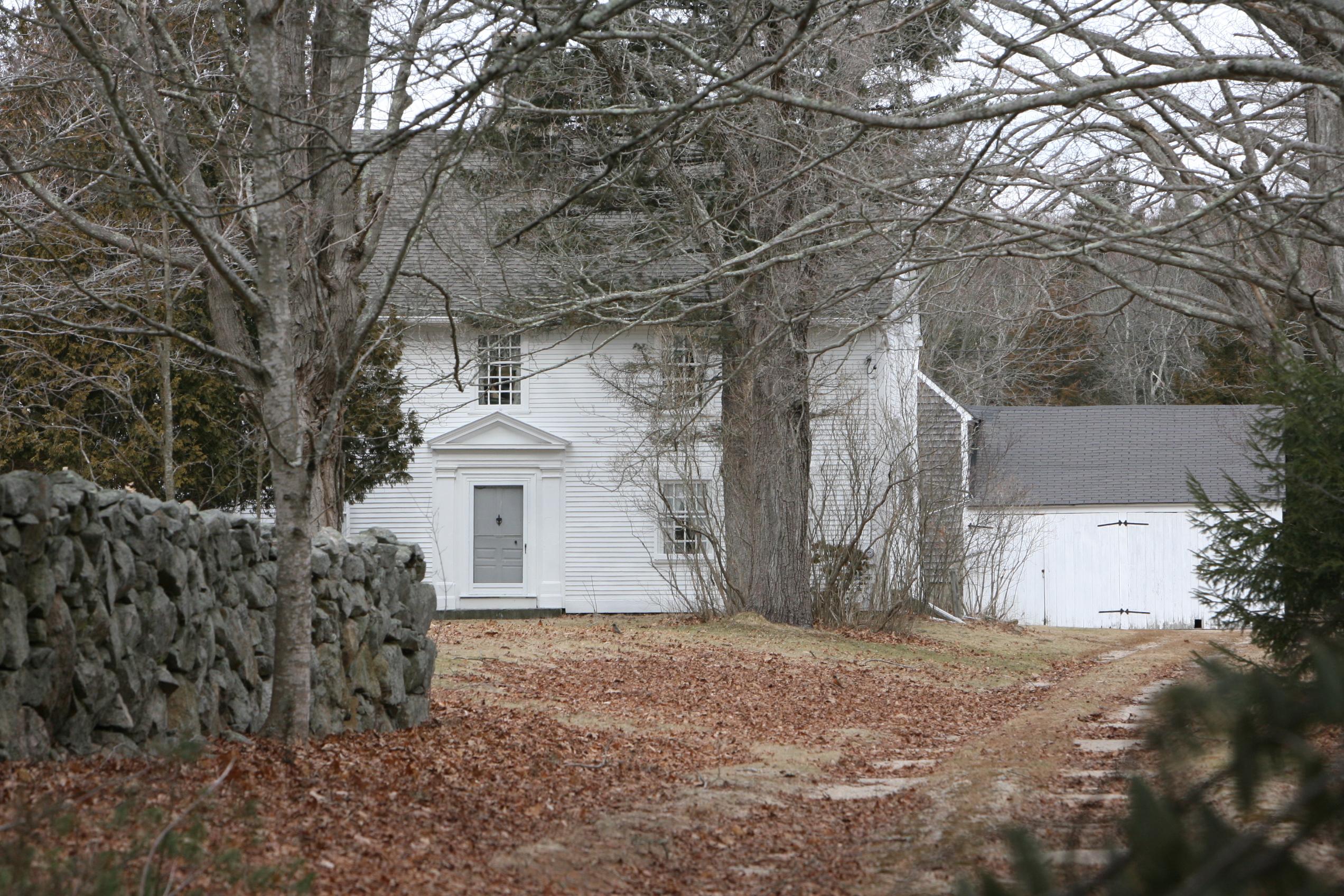South County: Plantation Houses
About 100 gallons of Newport rum would buy a male slave. Hundreds of thousands of gallons of rum and other goods were shipped to Africa by Rhode Island slave merchants. Those who survived the voyage to the West Indies and the Americas, chained below the decks of slave ships, were auctioned off. On Caribbean islands, men, women and children died harvesting and refining sugar cane into molasses. Plantation owners calculated a slave’s working life to be about seven years. In the cycle of the triangular trade, molasses was shipped to Newport, distilled into rum, and shipped to the African coast to buy more slaves to replenish the work force.
The Hannah Robinson House, on Old Boston Neck Road in Saunderstown, was built in 1710 by Rowland Robinson, one of the most successful Narragansett Planters.
The Hannah Robinson House, on Old Boston Neck Road, Saunderstown, built in 1710 by Rowland Robinson, a wealthy Narragansett planter.
The Casey Farm in Saunderstown, still a working farm, was one of several plantations in South County.
Casey Farm, Saunderstown, one of several plantations in South County.
The Samuel Perry House in Matunuck, with a large stone chimney and saltbox addition, was built between 1696 and 1716.
The Samuel Perry House, Matunuck, with its large stone chimney and its salt-box addition, was built between 1696 and 1716. Samuel Perry came to “kingstowne” and was made a freeman of the colony. When he died he left by will the homestead and mill and 146 acres to his son James.
The Hazard House, built around 1740 on Old Boston Neck Road in Narragansett, sits on land purchased from the Narragansett Indians in 1661 by Humphrey Atherton.
The Hazard House, circa 1740.
The Palmer Gardiner House, off Mooresfield Road in North Kingstown, was built between 1735 and 1765.
The Palmer Gardiner House, 1735 /1765, 527 Mooresfield Road, North Kingstown. (for slavery story)
The Henry Marchant House, in Richmond, was probably built by John Babcock in the early 1700s and transferred to Marchant in 1775. Marchant was a member of the Continental Congress and served as a U.S. District Court judge.
Henry Marchant house, built in the early part of the eighteenth century, John Babcock received the house by inheritance from his father in 1763. It was conveyed to Henry Marchant in 1775. Henry Marchant (1741-96) was a member of the Continental Congress and late Judge of the United States Court of the District of R.I. He remained in this house until 1784, when he returned to Newport, still retaining his ownership in the property. The house contains many interest features, including inside sliding shutters.
Paul Davis is a former staff writer for The Providence Journal.
Source: The Notorious Triangle by Jay Coughtry
